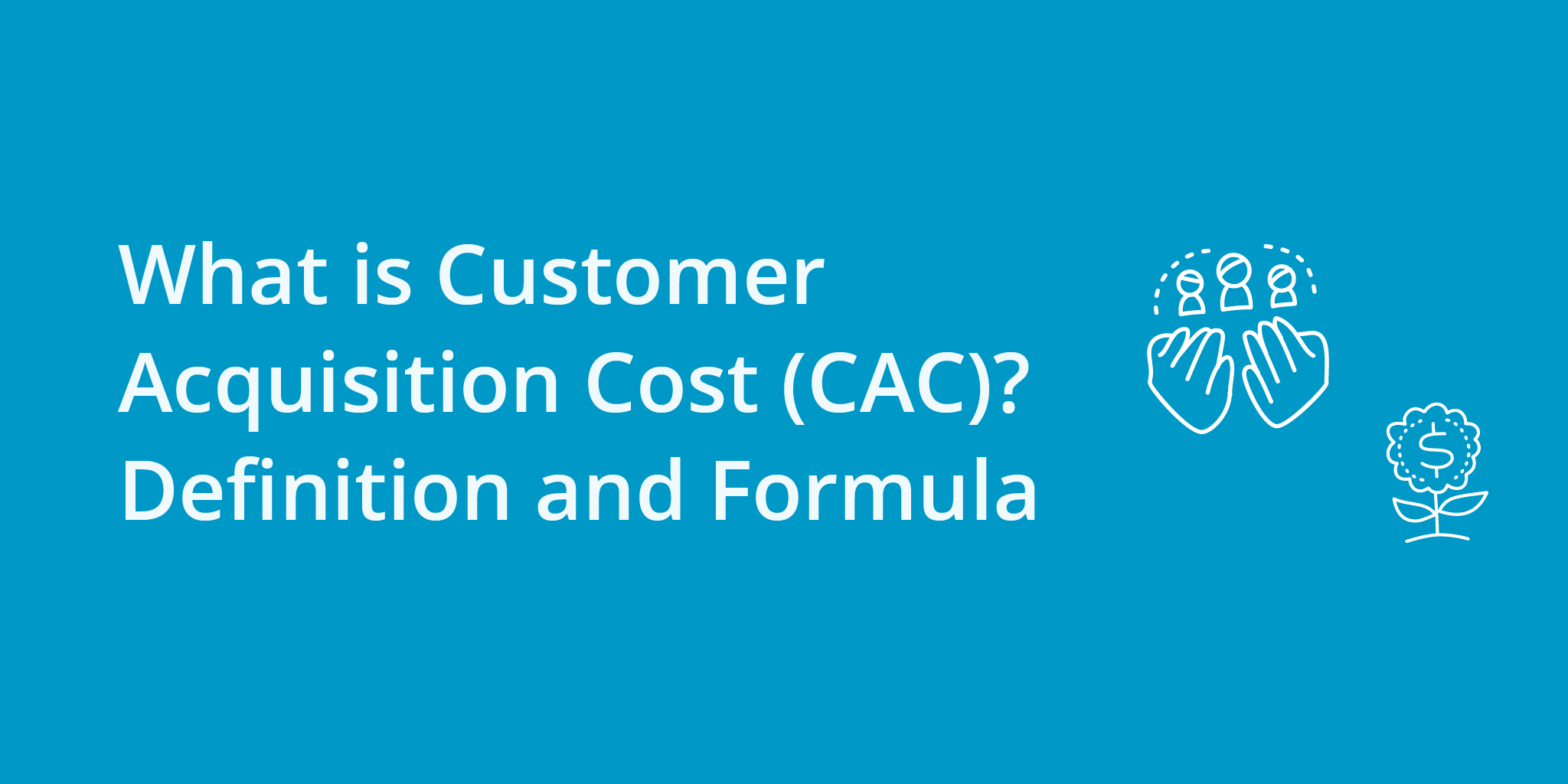For businesses, acquiring new customers is a crucial aspect of growth and profitability. However, it can be an expensive endeavor, particularly when considering the cost of marketing and sales efforts.
This is where Customer Acquisition Cost (CAC) comes in – it is a key metric that businesses use to measure the cost of acquiring a new customer and is essential in determining the effectiveness and profitability of their customer acquisition strategy.
In this article, we will define CAC, explain the formula used to calculate it, and provide some examples of how it is used in practice. By the end, you will have a better understanding of why CAC is important for businesses and how to calculate it for your own company.
Customer Acquisition Cost Definition
CAC stands for Customer Acquisition Cost, which is a metric that businesses use to determine the cost of acquiring a new customer. It takes into account all of the costs associated with acquiring a new customer, including marketing and advertising expenses, sales and marketing personnel salaries, and any other costs directly related to acquiring new customers.

How to Calculate CAC
The formula for calculating CAC is as follows:
CAC = Total cost of sales and marketing / Total new customers acquired
For example, let’s say a business spends $10,000 on marketing and sales efforts in a month and acquires 100 new customers during that same period. The CAC for that month would be:
CAC = $10,000 / 100 = $100 per customer
This means that, on average, it costs the business $100 to acquire each new customer.
Another example:
A company spends $50,000 on marketing and sales efforts in a quarter and acquires 500 new customers during that same period. The CAC for that quarter would be:
CAC = $50,000 / 500 = $100 per customer
This means that, on average, it costs the business $100 to acquire each new customer during that quarter.
It’s important to note that the CAC can vary based on the industry, customer lifetime value, and the specific marketing and sales channels used to acquire customers. Businesses should aim to lower their CAC over time through optimizing their marketing and sales strategies and improving their customer retention efforts.
What is a Good CAC?
The average CAC can vary widely depending on the industry, the size of the company, the target customer segment, and the marketing and sales strategies used.
It’s worth noting that CAC is often higher for companies in the early stages of growth, as they are still refining their marketing and sales strategies and may be investing heavily in customer acquisition. As a company matures and becomes more established, it may be able to reduce its CAC through improved efficiency in its marketing and sales efforts, increased customer retention, and greater word-of-mouth referrals.
Ultimately, the ideal CAC for a company will depend on a number of factors such as its business model, revenue goals, and growth targets. It’s important for companies to regularly monitor and optimize their CAC to ensure that they are acquiring customers at a cost that is sustainable and generates a positive return on investment.
Why Is CAC Important For Marketing And Sales Teams?
CAC is an important metric for sales and marketing teams because it helps them understand the cost of acquiring new customers, which in turn affects the profitability of the business. Here are some reasons why CAC is an important metric to include in your sales and marketing planning:
- Evaluating marketing and sales strategies: By calculating CAC, sales and marketing teams can determine which marketing and sales channels are most effective at acquiring new customers. This can help them optimize their marketing and sales strategies to reduce the overall cost of customer acquisition.
- Measuring profitability: CAC is an important metric for measuring the profitability of the business. By comparing CAC to customer lifetime value (CLV), businesses can determine whether their customer acquisition efforts are generating a positive return on investment (ROI).
- Forecasting future growth: CAC can be used to forecast future growth of the business. By understanding the cost of acquiring new customers, businesses can determine how much they need to invest in marketing and sales to achieve their growth targets.
- Improving customer retention: By understanding the cost of acquiring new customers, businesses can focus on retaining existing customers to improve the overall profitability of the customer base. This can lead to lower CAC over time and increased profitability.
Customer Acquisition Cost vs. Lifetime Value
As a general rule of thumb, a CAC that is lower than the customer’s lifetime value (LTV) is considered good for a SaaS company. This means that the company is acquiring customers at a cost that is lower than the amount of revenue that they will generate for the company over the course of their lifetime.
For example, if the LTV of a customer is $1000 and the CAC to acquire that customer is $500, then the CAC is considered good as it is less than the LTV. In contrast, if the CAC to acquire a customer is $1500, then it is not considered good as it is higher than the LTV.
In general, SaaS companies should aim to keep their CAC as low as possible while still maintaining an acceptable level of customer acquisition volume and quality. This can be achieved through a combination of optimizing marketing and sales strategies, improving customer retention efforts, and leveraging cost-effective acquisition channels.
Final Thoughts
In conclusion, Customer Acquisition Cost (CAC) is a crucial metric for businesses to understand the cost of acquiring new customers. By calculating CAC, companies can evaluate the effectiveness of their marketing and sales strategies, measure profitability, forecast future growth, and improve customer retention.
While there is no one-size-fits-all answer to what constitutes a good CAC, businesses should aim to keep their CAC as low as possible while still maintaining an acceptable level of customer acquisition volume and quality. By regularly monitoring and optimizing their CAC, companies can ensure that they are acquiring customers at a cost that is sustainable and generates a positive return on investment.



